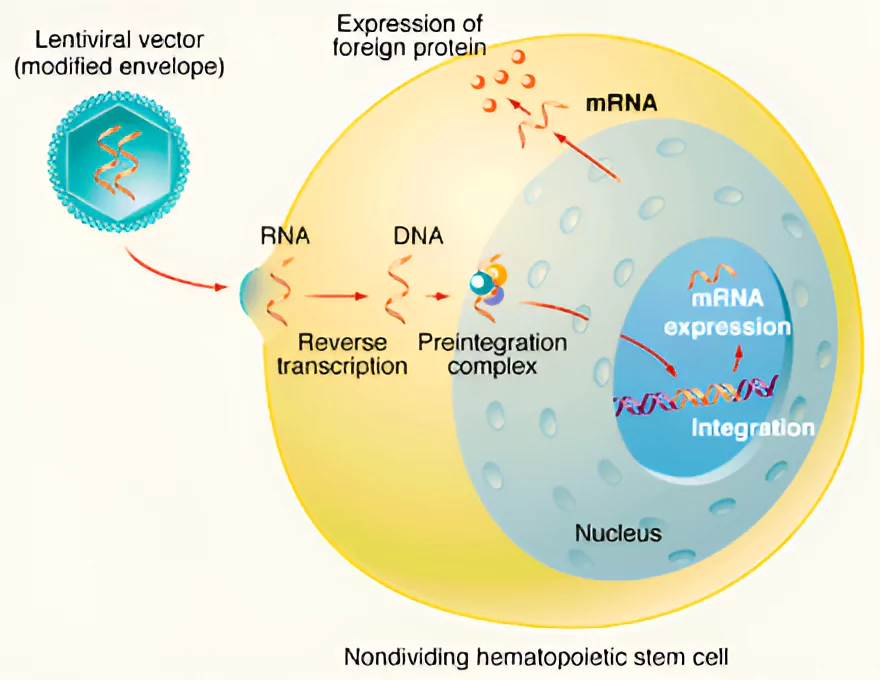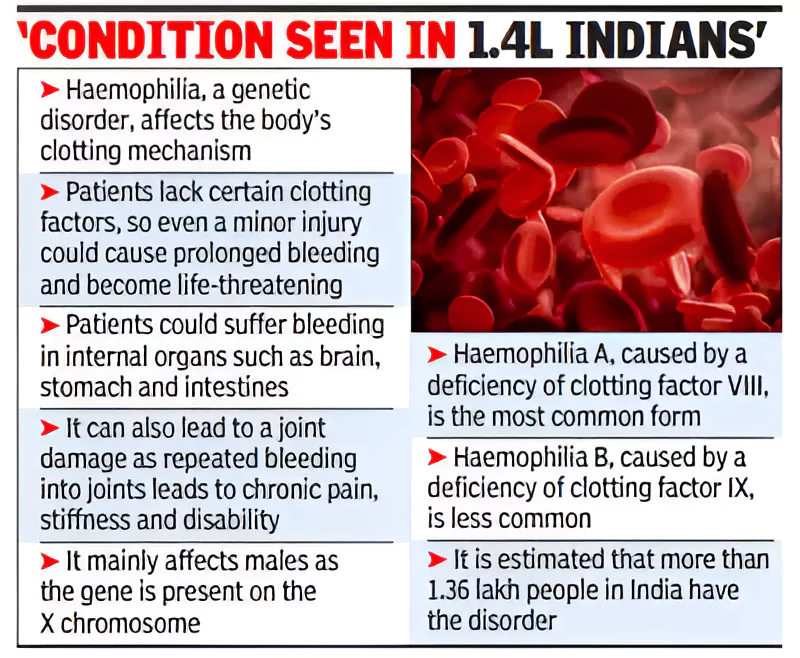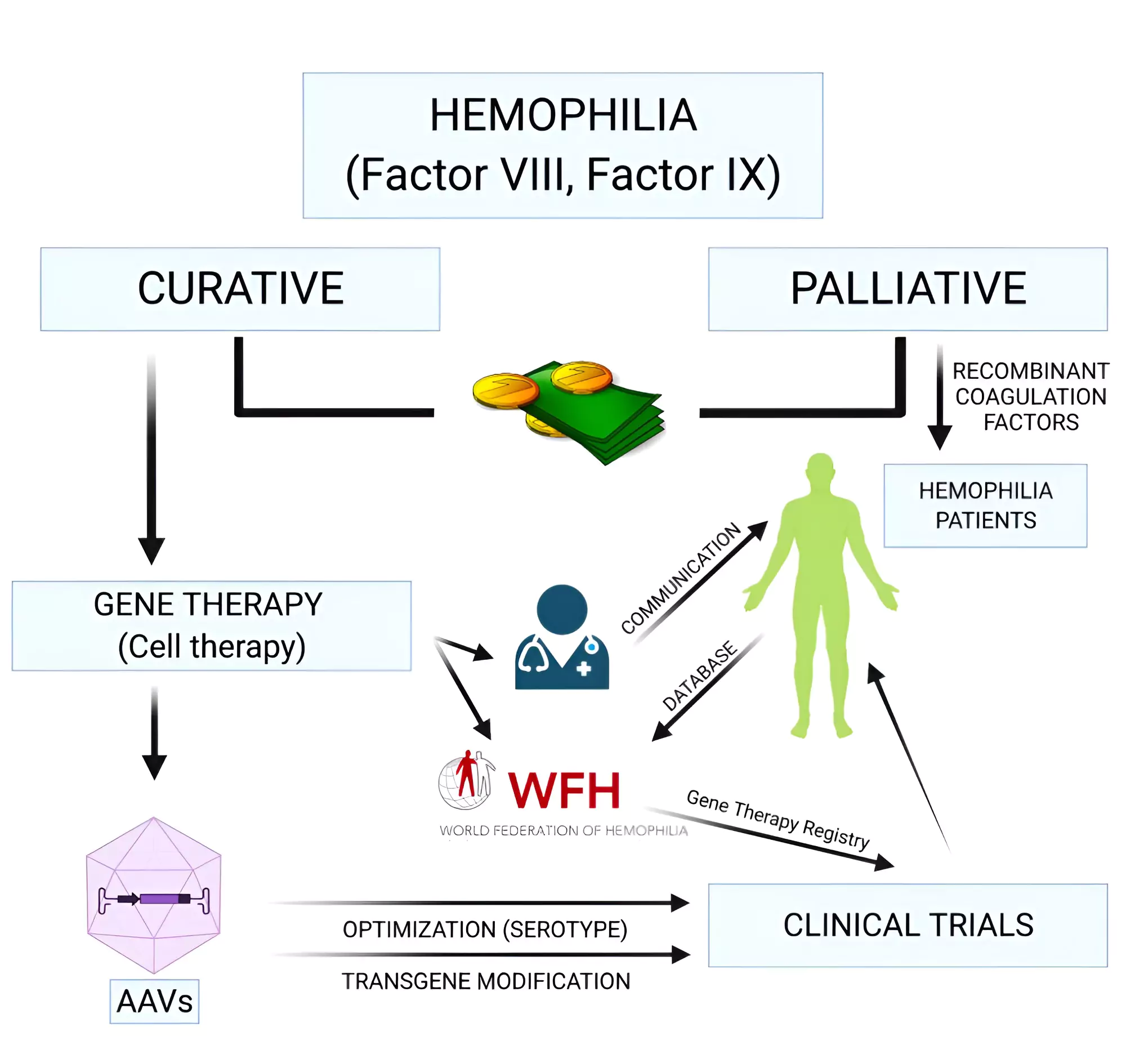Context:
Recently, the Union Science and Technology Minister announced that India has conducted the first human clinical trial of gene therapy for haemophilia A at Christian Medical College – Vellore.
India Conducts Clinical Trials For Haemophilia A
The trials involved deploying a novel technology of using a lentiviral vector to express a FVIII transgene in the patient’s own haematopoietic stem cell which will then express FVIII from specific differentiated blood cells.
About Lentiviruses
Lentiviruses are a class of retroviruses that include human immunodeficiency virus (HIV), simian immunodeficiency virus (SIV), feline immunodeficiency virus (FIV) and equine infectious anemia virus (EIAV).

|
About Haemophilia A
- A Rare Bleeding Disorder: Hemophilia A, also known as classical haemophilia, is a rare and genetic bleeding disorder caused by insufficient levels of a blood protein called factor VIII.
- Factor VIII is a clotting factor (an essential protein required for blood to clot and stop bleeding).
- Caused by: Hemophilia A is caused by disruptions or changes (variants or mutations) to the F8 gene located on the X chromosome.
- Susceptibles: Hemophilia A is mostly expressed in males but some females who carry the gene variant may have mild or, rarely, severe symptoms of bleeding.
- World Haemophilia Day: April 17

About Haemophilia
- Caused by: Hemophilia is caused by a defect in the X chromosome.
- A Royal Disease: Britain’s Queen Victoria (1819-1901) is the world’s most widely known carrier of haemophilia.
- From her, the condition spread among a number of European royal families, which is why haemophilia was once known as the “royal disease”.
- An Inherited Disease: Haemophilia is a medical condition, mostly inherited, in which the ability of blood to clot is severely reduced so that even a minor injury can cause severe bleeding.
- Types: The most common type of Haemophilia is called Haemophilia A. Here, the person does not have enough clotting factor VIII.
- Haemophilia B is less common. Here, a person does not have enough factor IX.
- Statistics In India: Haemophilia A, occurs in about 1 in 5,000 births, while Haemophilia B is even rarer at about 1 in about 20,000 births.

About Gene Therapy For Haemophilia
- It is based on the transfer of a non-pathogenic and non-replicating recombinant adeno-associated virus (AAV), the viral DNA of which has been replaced by a bioengineered gene cassette, with a tissue-specific promoter and other regulatory elements.
- Roctavian is the first gene therapy to treat haemophilia A. The active substance in Roctavian, valoctocogene roxaparvovec, is based on a virus (adeno-associated virus or AAV) which has been modified to not cause disease in humans.
About the World Federation of Haemophilia (WFH):

- Established: It is an international not-for-profit organization that was established in 1963.
- Recognition by WHO: It is a global network of patient organizations in 140 countries and has official recognition from the World Health Organization.
- Vision: To improve and sustain care for people with inherited bleeding disorders.
Why is Haemophilia More Common Among Boys?
- For Girls: If a girl is born with one defective X chromosome, her other X chromosome can compensate for it. In such a case, she is a carrier of haemophilia but will not suffer from the condition herself. Only if both her X chromosomes are defective will she suffer from haemophilia herself.
- For Boys: On the other hand, if a boy is born with a defective X chromosome, he does not have the second X chromosome to compensate for it, and will suffer from haemophilia. Hence, haemophilia is more common among boys.
|
Also Read: Casgevy And Lyfgenia: CRISPR-Based Gene Therapies
News Source: PIB
![]() 29 Feb 2024
29 Feb 2024


